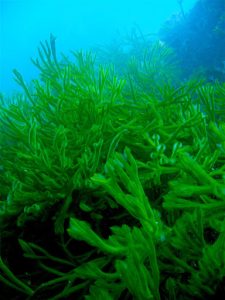
Oyster Thief
Fact Sheet Marine Macroalgae Codium fragile | Codium, Dead Man’s Fingers Description Green alga shaped like a small bush, velvety and spongy to the touch.
Invasive species are plants, animals and micro-organisms that have been introduced into areas beyond their native range and negatively impact the environment, the economy, or society.
It is widely accepted that invasive species are an immense threat to biodiversity worldwide. In Canada alone, more than 20% of our species at risk are threatened with extinction by invasive species. Invasive species cause harm in several ways. For example, they may eat native species, take their food and space, contribute to soil degradation and erosion, introduce new diseases, and degrade water quality and habitat. The destruction caused by invasive species also has adverse effects on human life. Invasive species can damage buildings and roads. From an economic viewpoint, invasive species greatly impact productivity and profit in forestry, agricultural, and fishing industries – as well as reducing recreational opportunities.
Humans are largely responsible for the movement of invasive species from one area to another. Many human-assisted pathways have permitted the introduction of invasive species in Nova Scotia. Examples of these pathways include – but are certainly not limited to – horticultural trade, aquarium trade, the movement of shipping containers, ballast water tanks in cargo ships, recreational boating, and the release of species for hunting or angling purposes. Once established, invasive species can spread naturally, or be moved further by human activities such as outdoor recreation, release of pets into the environment, or movement of firewood.
Everyday activities often contribute to the spread of invasive species. For example, buying products from overseas requires transportation via container ships; those ships may inadvertently transport invasive species to Nova Scotia. Buying local products and reducing your overall ecological footprint not only helps to reduce habitat destruction, climate change, pollution, and overexploitation of natural resources – it is also fundamental for the prevention of invasive species introductions across the globe.

Fact Sheet Marine Macroalgae Codium fragile | Codium, Dead Man’s Fingers Description Green alga shaped like a small bush, velvety and spongy to the touch.
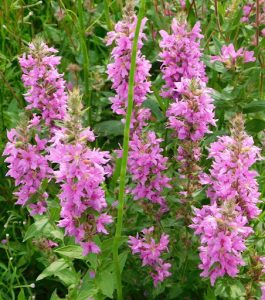
Fact Sheet Vascular Plant Lythrum salicaria | Other Names: Loosestrife, Spiked Loosestrife Description Stems arise from perennial rootstock. 30-50 stalks can arise from a single
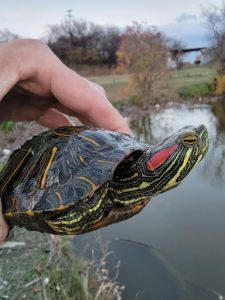
Fact Sheet Reptile Trachemys scripta elegans Description Pond Sliders have brown to olive green coloured shells, with a slight keel running down the center. Green-black

Fact Sheet Grass/Sedge Phalaris arundinacea Description Reed Canary Grass is a cool season, perennial grass that grows up to 1.7 m tall. Its leaf blades
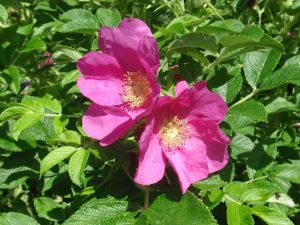
Fact Sheet VASCULAR PLANT Rosa rugosa Description Rugosa Rose is a dense shrub that grows up to 2.5 m tall. Its stem is robust, with
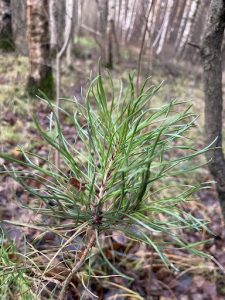
Fact Sheet Vascular Plant Pinus sylvestris | Other Names: Scots Pine, Caledonian Pine Description Scotch Pines are large, evergreen, coniferous trees that can grow up
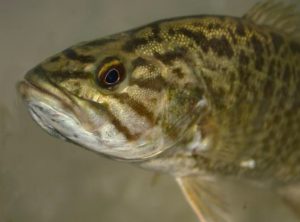
Fact Sheet Freshwater Fish Micropterus dolomieu | Other Names: Smallie, Brown Bass, Black Bass Description Smallmouth Bass have a robust, brown-green body with a white
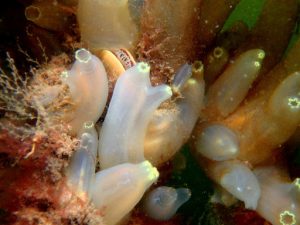
Fact Sheet MARINE ANIMAL Styela, Ascidiella, Ciona Spp. | Other Name: Sea Squirt Description Solitary Tunicates are small marine filter-feeding animals, sometimes referred to as
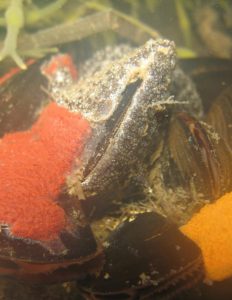
Fact Sheet MARINE ANIMAL Ciona, Botryllus, & Botrylloides spp. | Other Name: Sea Squirt Description Small marine, filter-feeding animals, sometimes referred to as sea squirts,
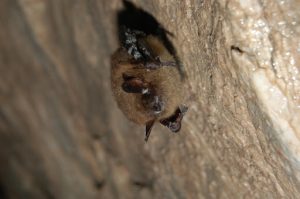
Fact Sheet fungus Pseudogymnoascus destructans Description Pseudogymnoascus destructans is a fungal pathogen that causes the disease known as White-Nose Syndrome. This disease is characterized by
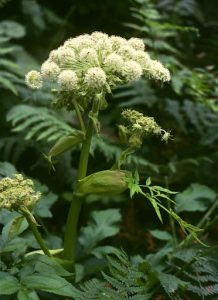
Fact Sheet VASCULAR Angelica sylvestris Description Large biennial member of the carrot family commonly 1-2 m tall when flowering from July to September. Small, fragrant
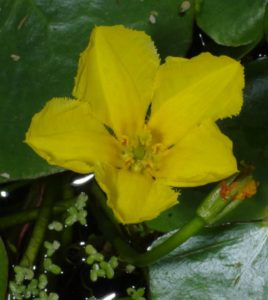
Fact Sheet Vascular Plant Nymphoides peltata | Other Names: Fringed Water Lily, Water Fringe Description Yellow Floating Heart is a bottom-rooted, floating-leaved aquatic plant. Its
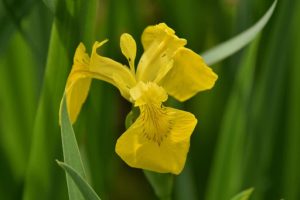
Fact Sheet Vascular Plant Iris pseudacorus | Other Names: Yellow Flag Iris Description This perennial wetland plant has three drooping petal flowers that are bright
Fact Sheet Insect & Fungus Hylurgopinus, Scotylus, & Ophiostoma spp Description Dead and dying White Elm trees. Results from several different microscopic sac fungi (all of which are probably exotic) that infect the tree when one of two elm bark beetles (one of which is exotic) feed on its bark. The beetles reproduce and continue
Fact Sheet INSECT Agrilus planipennis Description The Emerald Ash Borer is a narrow, elongated beetle that is 8.5–14 mm long, and 3.1 –3.5 mm wide. Adults have a metallic-green back and bright-emerald belly. Their head is flat with black or bronze kidney-shaped eyes. Adults are present from June through August. Their small oval eggs turn
Fact Sheet VASCULAR PLANT Alliaria petiolata Description Herbaceous biennial, with vegetative rosette in the first year. Leaves 2-12 cm wide, dark green, kidney shaped, smelling of garlic when crushed, margins scalloped. Taproot is thin, deep, and white. Second year plant extends a hairy flowering stalk up to 1m tall bearing alternating triangular leaves 3-8 cm
Fact Sheet VASCULAR Heracleum mantegazzianum Description A perennial member of the carrot family which can grow to exceed 5m in height. Basal leaves lobed, coarsely toothed, reaching 3m in length, glabrous on the upper surface and bristled on the lower surface. After 3-5 years as a vegetative rosette, produces a massive flowering stalk which is
Fact Sheet Vacular Plant Frangula alnus | European Alder Buckthorn Description Single or many stemmed shrub or small tree, reaching heights of 6 m. Leaves alternate along the stem, oval-shaped, 3 to 7 cm long and 2.5 to 4 cm wide, with smooth edges and a glossy upper surface. Flowers star-shaped, five-petaled, greenish-white, 3 to
Fact Sheet CRUSTACEAN Carcinus maenas | Other Name: European Green Crab Habitat & Impact Green Crabs are common in shallow water of salt marshes, beaches and rocky coasts, or in vegetation. They can tolerate a wide range of salinities. They are voracious consumers of plants and animals, especially soft-shell clams, oysters, quahogs, and mussels. They
Fact Sheet INSECT, TREE PEST Adelges tsugae Description Hemlock Woolly Adelgid is an aphid-like insect that parasitizes Eastern Hemlock (Tsuga canadensis) trees. The first generation of the bug are 1.4 mm long, and are present from June to March. Second-generation crawlers are 0.9 mm long, and are present March to June. Both generations are black,
Fact Sheet Vascular Plant Rubus armeniacus l Armenian blackberry Description Himalayan Blackberry is a very large blackberry that produces robust arching 5-angled canes that reach up to 3 m in height and 12 m in length. Canes have large hooked or straightened thorns and can root at the tips. It has large leaves that are
Fact Sheet VASCULAR PLANT Reynoutria japonica | Other Names: Mexican Bamboo, Fleeceflower Description Japanese Knotweed is a woody-stemmed herbaceous perennial 1-3 m tall, with annual stems extending from the perennial root system. It can grow up to 8 cm per day. New growth is purplish in color, and turns to green as the plant matures.
Join our mailing list.